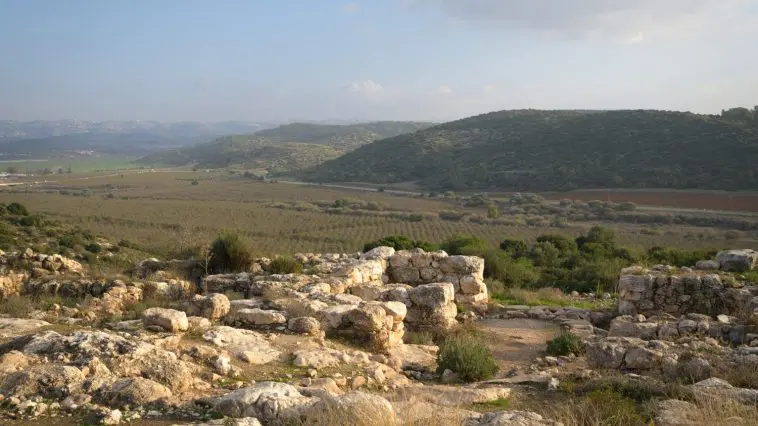[Originally published in 2013 as Archaeologists May Have Found a Palace Used by King David. See note at the end for more recent findings.]
King David is a central figure in the Old Testament. In 1 Samuel 17, we learn that as a young man, his faith in God allowed him to challenge and defeat the champion of the Philistine army (Goliath), who was a giant. He spent many years on the run from the vengeful King Saul, but eventually, he became ruler over all Israel. He also fathered one of the wisest men who ever lived: King Solomon.
He was far from a saint, however. He not only forced a woman to commit adultery with him, but he also arranged for her innocent husband to be killed in battle. Despite such grave sins, we learn in the New Testament (Acts 13:22) that he was a man after God’s own heart.
There are some biblical scholars who think that King David never existed. Dr. Philip R. Davies, Professor Emeritus of Biblical Studies at the University of Sheffield, says:
I am not the only scholar who suspects that the figure of King David is about as historical as King Arthur.
Others think that David might have been a real person, but he was not the ruler of a mighty kingdom, as depicted in the Old Testament. Dr. Michael Carden suggests:
Was there a David? Possibly. Possibly a bandit and maybe eventually a warlord with some authority in Judah during the ninth century BCE, from whom a subsequent dynasty in Jerusalem claimed descent.
The main reason some think David could not have been ruler over a great nation is that there is very little archaeological evidence that indicates Judah was anything but a rural backwater during the time when David reigned. This view, however, might be changing.
Archaeologists from the Hebrew University and the Israel Antiquities Authority have been excavating an ancient city called Khirbat Qeiyafa that lies about 20 miles outside of Jerusalem. They are convinced that this city was built in the 11th century B.C., and it therefore demonstrates that Judah was anything but a rural backwater. They state:
The excavations at Khirbat Qeiyafa clearly reveal an urban society that existed in Judah already in the late eleventh century BCE. It can no longer be argued that the Kingdom of Judah developed only in the late eighth century BCE or at some other later date.
Now there is even more news out of Khirbat Qeiyafa: The archaeologists think they have found Kind David’s palace! They have uncovered two large buildings that sit at the center of the ancient city and interpret them as royal public buildings. The buildings seem ideally located for controlling all parts of the city and for sending fire signals to distant locales, such as Jerusalem.
They say their find provides:
…unequivocal evidence of a kingdom’s existence, which knew to establish administrative centers at strategic points
Of course, there are those who disagree with the archaeologists’ interpretations, claiming that the city could have been built by other people living in the area and was not associated in any way with King David. However, the archaeologists point out that they have found cultic objects known to be used by Judeans at the time, and there is no evidence of any pig remains, which should have been common in any city that was not explicitly Jewish.
It will be interesting to see how the excavation of Khirbat Qeiyafa ends up panning out. Right now, it seems as if the archaeologists have a pretty strong case. If so, those who interpret David as either fictional or a “bandit warlord” will have to change their view. At the same time, however, new information could come to light that strongly challenges the interpretation given by those who are doing the excavation.
As is the case with most scientific discoveries, only time will tell.
[To see the latest research, visit the Biblical Archaeology Society’s website.]







